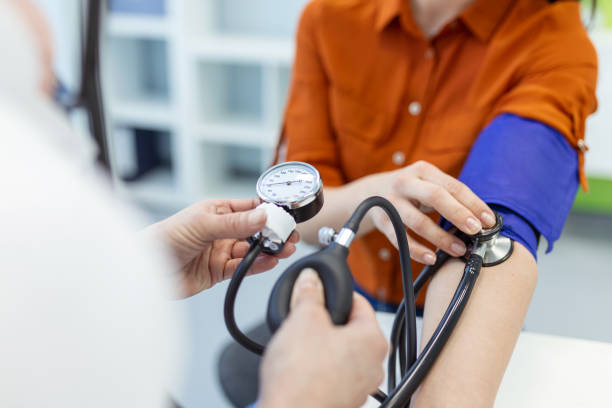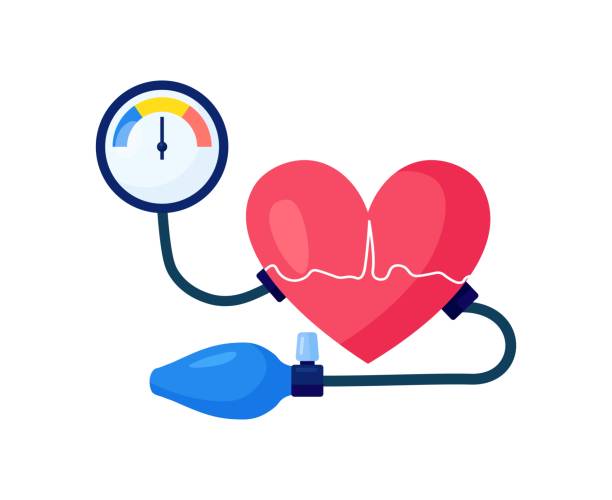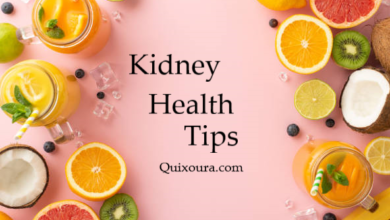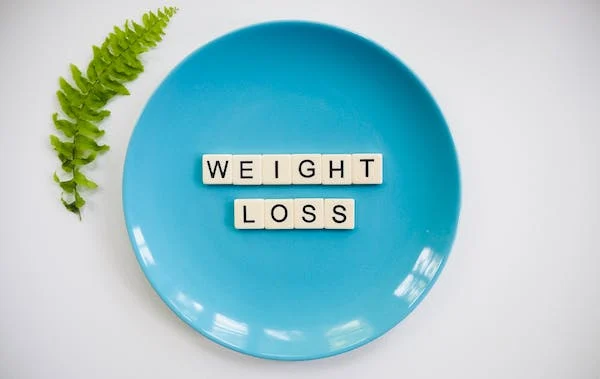Hypertension Unveiled: Causes, Symptoms, and Management
Hypertension Unveiled: Causes, Symptoms, and Management

Hypertension, commonly known as high blood pressure, is a prevalent condition that affects millions of people worldwide. It’s a major risk factor for cardiovascular diseases and a leading cause of premature death globally. Understanding hypertension is crucial for its prevention and management. In this article, we will delve into the causes, symptoms, diagnosis, and treatment of hypertension, as well as its implications for overall health.
What is Hypertension?
hypertension high blood pressure, is a medical condition where the force of the blood against the artery walls is too high consistently, leading to potential health risks. Your blood pressure depends on how much blood your heart pumps and how easily blood flows through your arteries. When your heart pumps more blood and your arteries are narrower, your blood pressure goes up. A reading above 130/80 mmHg is typically considered hypertensive. While it can be asymptomatic for long periods, uncontrolled hypertension increases the risk of serious health issues, including heart disease, stroke, and kidney problems. It’s often called the “silent killer” because it lacks obvious symptoms but can lead to catastrophic health outcomes if not addressed.

Causes of Hypertension
The causes of hypertension can be divided into two main categories: primary (essential) hypertension and secondary hypertension.
Primary Hypertension:
This type is more common and develops gradually over many years without a clear cause. However, several factors are associated with an increased risk of developing primary hypertension, including:
-
- Genetic Factors: There’s a hereditary aspect to hypertension, meaning it can run in families.
- Age: The risk of hypertension increases as you age.
- Race: Certain races, like African Americans, are at a higher risk.
- Lifestyle Choices: Poor diet (especially high salt intake), lack of physical activity, excessive alcohol consumption, and smoking can contribute to the development of hypertension.
- Obesity: Being overweight or obese is a strong risk factor for hypertension.
Secondary Hypertension:
This type is caused by an underlying condition and tends to appear suddenly and cause higher blood pressure than primary hypertension. Causes include:
-
- Kidney Disease: Issues with the kidneys can affect blood pressure significantly.
- Adrenal Gland Tumors: These can cause hormonal imbalances that affect blood pressure.
- Thyroid Problems: Both hyperthyroidism and hypothyroidism can cause blood pressure changes.
- Certain Medications: Birth control pills, decongestants, over-the-counter pain relievers, and some prescription drugs can cause secondary hypertension.
- Sleep Apnea: Interrupted breathing during sleep can increase the risk of hypertension.
- Congenital Heart Defects: Some people are born with conditions that affect the heart’s normal functioning, leading to hypertension.
Understanding these causes can help in managing and potentially preventing hypertension through lifestyle changes, medical intervention, and regular monitoring of blood pressure.
hypertension blood pressure symptoms
Hypertension is often called the “silent killer” because it typically doesn’t present noticeable symptoms until it has reached a severe or life-threatening stage. However, in cases where blood pressure reaches extremely high levels, some individuals might experience specific symptoms. Here’s a detailed look at the possible symptoms associated with hypertension:
-
Headaches:
Severe hypertension might cause headaches. However, it’s worth noting that mild to moderate hypertension usually doesn’t cause headaches or nosebleeds except in cases of hypertensive crisis.
-
Shortness of Breath:
Individuals with very high blood pressure may experience shortness of breath, especially during physical activity or stress.
-
Nosebleeds:
Although nosebleeds are less common and not always indicative of hypertension, some people with severe or emergency-level high blood pressure might experience them.
-
Visual Changes:
It can lead to changes in vision, including blurred vision or vision loss, due to its impact on the blood vessels in the eyes.
-
Chest Pain:
High blood pressure can cause chest pain or discomfort, which might be a sign of heart disease or an impending heart attack.
-
Flushing:
Flushing, or a feeling of warmth and redness in the face, can sometimes be associated with high blood pressure, though it’s not a definitive symptom.
-
Dizziness:
While not exclusively linked to hypertension, dizziness can sometimes occur in people with high blood pressure, particularly in hypertensive crises.
-
Blood Spots in Eyes:
Subconjunctival hemorrhage, or blood spots in the eyes, can be a symptom of severe hypertension.
-
Fatigue or Confusion:
Extreme levels of high blood pressure can cause fatigue, confusion, or alterations in mental status, indicating a need for immediate medical attention.
-
Pounding in Your Chest, Neck, or Ears:
Occasionally, a person with significant hypertension might notice a pounding sensation in the chest, neck, or ears.
It’s essential to recognize that many of these symptoms can be associated with other health conditions as well, so they’re not definitive proof of hypertension. The most effective way to know if you have hypertension is through regular blood pressure checks. If hypertension is suspected or confirmed, it’s crucial to follow a healthcare provider’s guidance for management and treatment to reduce the risk of serious complications like heart attack, stroke, and kidney disease.

Diagnosis and Monitoring
The diagnosis and monitoring of hypertension are crucial steps in managing the condition and preventing potential complications. Here’s an in-depth look at how hypertension is diagnosed and monitored:
Diagnosis
- Checking Blood Pressure: The main way to identify high blood pressure is by measuring blood pressure. Blood pressure is measured in millimeters of mercury (mmHg) and is recorded as two numbers: systolic pressure (the pressure in the arteries when the heart beats) over diastolic pressure. A reading of 130/80 mmHg or higher is generally considered hypertensive.
- Multiple Readings: Because blood pressure can fluctuate, multiple readings at different times are necessary to confirm a diagnosis of hypertension. Healthcare providers may take several measurements during a single visit or ask patients to return for additional checks before confirming a diagnosis.
- Home Monitoring: Patients might be asked to monitor their blood pressure at home using a home blood pressure monitor. This approach helps to identify “white-coat hypertension,” where blood pressure is elevated in a medical setting but normal at home, and “masked hypertension,” where the blood pressure is normal in a medical environment but heightened while at home
- Ambulatory Blood Pressure Monitoring (ABPM): In some cases, healthcare providers may recommend ABPM, where blood pressure is measured at regular intervals over 24 hours using a device worn by the patient. This method provides a comprehensive profile of blood pressure changes throughout the day and night.
Monitoring
- Regular Check-ups: Once diagnosed, patients with hypertension should have regular check-ups to monitor their blood pressure and assess the effectiveness of their treatment plan. These check-ups can help in adjusting medications and lifestyle recommendations as needed.
- Lifestyle and Symptom Journal: Keeping a journal of lifestyle factors (like diet, physical activity, and medication adherence) and any symptoms can be valuable for monitoring hypertension and its management.
- Adjusting Treatment: Blood pressure targets can vary based on individual factors, including age, coexisting conditions, and risk of cardiovascular disease. Regular monitoring allows healthcare providers to adjust treatment plans to achieve and maintain optimal blood pressure levels.
- Assessing Organ Function: Hypertension can affect various organs, so healthcare providers may conduct tests to monitor the health of the heart, kidneys, eyes, and other organs affected by high blood pressure.
- Patient Education: Educating patients about hypertension and its management is a key part of monitoring. Patients who understand their condition and the importance of adherence to treatment are more likely to achieve better blood pressure control.
Through consistent monitoring and appropriate adjustments in treatment, individuals with hypertension can manage their condition effectively, reducing the risk of complications and improving their overall health.
Hypertension Treatments and Management
The treatment and management of hypertension are vital to reducing the risk of cardiovascular diseases and other complications.

Lifestyle Modifications
- Dietary Changes: Adopting a heart-healthy diet, such as the Dietary Approaches to Stop Hypertension (DASH) diet, which emphasizes fruits, vegetables, whole grains, and lean proteins, can significantly lower blood pressure. Reducing sodium intake is also crucial.
- Weight Management: Achieving and maintaining a healthy weight can have a substantial impact on controlling blood pressure. Even a small amount of weight loss can make a difference.
- Physical Activity: Regular physical exercise, such as 150 minutes of moderate-intensity or 75 minutes of vigorous-intensity aerobic physical activity per week, can lower blood pressure and improve heart health.
- Limiting Alcohol and Quitting Smoking: Limiting alcohol intake and quitting smoking can improve overall health and help regulate blood pressure. Smoking increases blood pressure and heart rate and causes narrowing of the arteries.
- Stress Management: Chronic stress can contribute to hypertension. Managing stress can become easier with techniques like mindfulness, meditation, staying active, and getting enough rest.
hypertension medications
If lifestyle modifications are insufficient to achieve blood pressure goals, medications may be prescribed. There are several classes of antihypertensive medications, often used in combination for better effectiveness:
- Diuretics: These help the kidneys remove excess sodium and water from the body, reducing blood volume and pressure.
- ACE Inhibitors: These medications work to relax blood vessels by preventing the production of a natural chemical that causes blood vessels to narrow.
- Angiotensin II Receptor Blockers (ARBs): These drugs block the action of angiotensin II, a chemical in the body that narrows blood vessels.
- Calcium Channel Blockers: These medications prevent calcium from entering the muscle cells of the heart and blood vessels, which allows blood vessels to relax.
- Beta-Blockers: Beta-blockers help the heart by reducing its workload and opening up blood vessels, which results in a slower and gentler heartbeat.
- Other Medications: Depending on the individual’s health profile and the cause of hypertension, other classes of drugs may be recommended.
Monitoring and Follow-Up
Regular monitoring and follow-up appointments are crucial to ensure the effectiveness of the treatment plan. During these visits, healthcare providers can adjust medication dosages, address any side effects, and reinforce the importance of lifestyle changes.
Patient Education
Educating patients about hypertension, its risks, and the importance of adherence to treatment and lifestyle changes is crucial for effective management.
Multifactorial Approach
Since hypertension can be influenced by various factors, a multifaceted approach that includes lifestyle changes, medication, regular monitoring, and patient education is essential for effective management and control of blood pressure.
Prevention
Preventing hypertension is crucial for reducing the risk of cardiovascular diseases, stroke, and other related health issues. While some risk factors like age and genetics cannot be changed, many strategies can help prevent or delay the onset of it:
-
Maintain a Healthy Diet:
Consuming a balanced diet rich in fruits, vegetables, whole grains, and lean proteins, and low in saturated fats, trans fats, and cholesterol can help maintain healthy blood pressure. The Dietary Approaches to Stop Hypertension (DASH) diet is specifically designed to help prevent and manage hypertension.
-
Reduce Sodium Intake:
Consuming too much sodium is connected to having high blood pressure. Reducing salt intake to less than 2,300 milligrams a day – ideally aiming for no more than 1,500 milligrams – can significantly lower blood pressure.
-
Regular Physical Activity:
Engaging in regular physical activity, such as brisk walking, jogging, cycling, or swimming, for at least 150 minutes per week can help keep your blood pressure in a healthy range.
-
Maintain a Healthy Weight:
Losing some weight, even if it’s just a small amount, can help lower your blood pressure, especially if you’re overweight or obese.
-
Limit Alcohol Consumption:
Drinking alcohol in moderation, if at all, can help prevent hypertension. For men, this means up to two drinks a day, and for women, one drink a day.
-
Quit Smoking:
Smoking increases blood pressure and damages blood vessels, raising the risk of it. Quitting smoking can improve your overall health and reduce your risk of hypertension.
-
Manage Stress:
Chronic stress can contribute to high blood pressure. Finding healthy ways to manage stress, such as through meditation, yoga, deep breathing exercises, or hobbies, can help prevent hypertension.

-
Regular Blood Pressure Monitoring:
Regularly monitoring your blood pressure, even if it’s within the normal range. Can help you notice any changes and take early action to prevent them.
-
Sleep Well:
Adequate sleep is essential for overall health and can help prevent hypertension.
-
Avoid or Limit Caffeine:
The relationship between caffeine and blood pressure is still debated. But it’s wise to moderate your intake if you’re at risk for hypertension.
By integrating these strategies into your daily routine. You can significantly lower your risk of developing hypertension and enjoy a healthier life. Always consult with a healthcare provider for guidance tailored to your individual health needs.
Conclusion
It is a serious health condition that requires attention and management to prevent its long-term health consequences. Understanding the causes, recognizing the lack of symptoms, and adhering to a healthy lifestyle. Treatment plans are crucial steps in managing and preventing it. It’s essential to consult with a healthcare provider for proper diagnosis and management.





